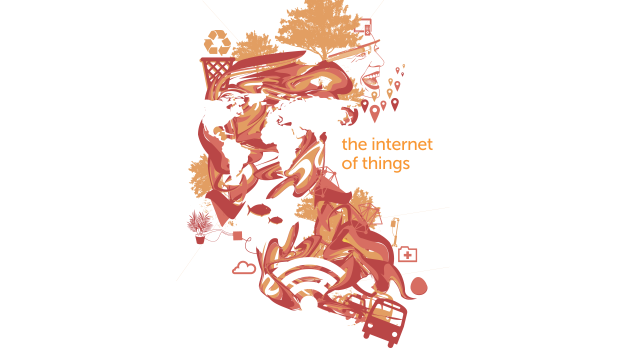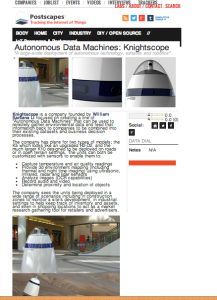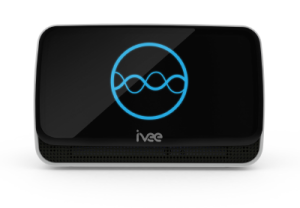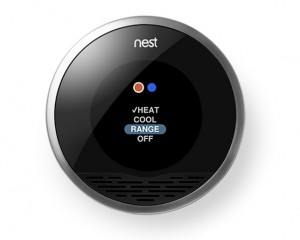Following up on my recent post on my favorite nominees for the 2013 Postscapes best-of-the-IoT contest, here are the actual winners. What do you think??
Get your vote in for best IoT products of 2013!
(sorry: WordPress and I didn’t agree on the formatting for this entry, and WordPress wins!)
Postscapes‘ annual Best of the IoT contest wraps up on the 30th, so don’t miss your chance to vote for last year’s best IoT products! You owe it to yourself to check out all the nominees: it will give a good overview of how the state-of-the-IoT has evolved, especially when you go back and compare the winners from the past two years.
 Here are my personal choices in the various categories, and my reasons for choosing them — the primary criterion being my friend Eric Bonabeau‘s perennial question of new technology, “what can you do now that you couldn’t do before?”
Here are my personal choices in the various categories, and my reasons for choosing them — the primary criterion being my friend Eric Bonabeau‘s perennial question of new technology, “what can you do now that you couldn’t do before?”
- Connected Home: I vote for the Mother smart home hub (probably because she looks like something from a Wallace & Gromit short..), cute, efficient, and open source (the leading vote-getter in this category is the iAquaLink pool control system: pardon my doubts, but there ain’t no way any automation system could control my pool: it’s basically a law unto itself!)
- Connected Body: Libelium Open Source e-Health Sensor Platform Libelium does such great work in general, and this one is, to my knowledge, the most all-encompassing Quantified Self monitoring system, monitoring, with 10 different sensors: pulse, oxygen in blood (SPO2), airflow (breathing), body temperature, electrocardiogram (ECG), glucometer, galvanic skin response (GSR-sweating), blood pressure (sphygmomanometer) and patient position (accelerometer). I think it was Dave Evans who said that 30% of all docs will retire in the next decade, while the number of senior/Boomers will increase exponentially. The only way we’ll be able to cope is by making it easy for doctors to know what’s happening with us — in real time!
- Smart City: On the day we mark environmental activist Pete Seeger’s death, what better than the open-source, crowd-funded Smart Citizen Kit, which empowers citizen activists to monitor environmental conditions! Power to the people, right on!
- Enterprise: The HyGreen Hand Hygiene Monitoring System. As I remarked before about a competing system, this is personal, because my cousin acquired a terrible Hospital Acquired Infection. Hand-washing is an absolutely critical hospital procedure, but until now we lacked a fool-proof method to make sure it was done!
- Technical Enabler: Thingworx expanded their offerings this year with the Thingworx Marketplace, providing developers ..”with the necessary building blocks to rapidly build innovative applications that integrate those connected devices with business systems, social and cloud services, and external systems, enabling them to drive value in the connected world.”
- Social Impact: OK, I’ll admit a soft spot for any reformer, so I count all these as “winners.” But the one that really caught my I was the Natalia Project, a wristband that alerts people if human rights workers are endangered. Here’s the story:”In 2009, human rights activist Natalia Estemirova was kidnapped and later found murdered in Chechnya. In part of honoring her and the incident the Swedish organization Civil Rights Defenders is launching the Natalia Project. At the heart of the idea lies a GPS and GSM equipped wristband that when triggered or is forcibly removed will send out an alert and location information to warn that its wearer could be in danger.”
- Networked Art: as the page says “Artists are often the first to see the potential in new technologies, even before those technologies are mature enough to be used to the consumer” (hmm, don’t think that’s what he meant to say, but you get the drift..) — and don’t forget the Arduino board came from a design school! My choice — hey, why not? — is Alex Kiesling’s “Long-Distance Art” — but the other ones look kewl too!
- Design Fiction: I’m going to pass on this one! I must be a little too literally minded!
- DIY Project: oooh: this harkens back to my “Data Dynamite” book, on liberating data! Here’s the description of my winner, the Data Sensing Lab:
“Hardware hacking for data scientists”. By deploying custom wireless hardware at tech conferences like Strata and Google I/O the team is looking to advance what real-time sensor network data collection, analysis, and visualizations will look like in the near future.“We will soon begin to move in a sea of data, our movements monitored and our environments measured and adjusted to our preferences, without need for direct intervention. What will this look like? How can we create and shape it? How can we introduce the relevant hardware to people who already possess data analytics skills?”
- Open Source: in many ways, the most important category of all, since without open standards the IoT just ain’t gonna go anywhere. I’m embarrassed that I hadn’t heard of it, but my choice in this category is Alljoyn. As the description says, “AllJoyn is an open source project that provides a software framework and set of Services that enable interoperability among connected products and software applications, across manufacturers, to create dynamic proximal networks. By integrating the AllJoyn framework codebase, manufactures can offer interoperable products and services that will engage and delight users in new, exciting and useful ways.” Yep.
- Startup of the Year: I see Evrythng as a critical IoT marketing tool.
- Must-Follow Company: I’d go with Libelium: they’re so ubiquitous and partner so well with so many.
So those are my choices — some are rather arbitrary because there are no so many promising IoT companies. Who are you voting for, and why??
Google makes IoT mainstream
We won’t know for a while the direct impact that Google’s stunning, multi-billion dollar acquisition of Nest will have, but one thing is for sure: it’s given the IoT an unprecedented level of recognition, and my bet is that history will judge that as a critical step in the IoT’s commercialization. After all, Nest only has two products, and their price premium compared to competing thermostats and smoke detectors meant they were definitely niche players. Now, the “Google Effect” will mean that they’ll get a disproportionate amount of media attention, just as the driverless car has.
That’s no small thing, especially for the IoT in general, which got more attention in 2013, but, IMHO, still remains unheard of among the general public. I suspect that the phrase “Internet of Things” got more exposure last week because of the Nest deal than it ever had in the past.
Of course, there are some big imponderables in the deal. Google’s past in consumer acquisitions (i.e., Motorola) isn’t exactly stunningly successful, and it’s hard to tell now how much they’ll want to grow the Nest line, or whether they’ll decide to make radical cuts in the devices’ prices to gain market share. I do suspect that one part of Nest’s strategy, adoption of the Apple closed-standards approach, will go bye-bye: not only is it incompatible with the whole Android philosophy, but it also makes no sense from an IoT standpoint, since the only way the IoT will ever succeed will be by standardizing on a small number of open systems (I’m a FIERCE Mac zealot, but still think that history will judge their devotion to a closed system to be a quirk: I always look to nature for inspiration, and nature doesn’t do things that way!).
The other big question about the deal is whether there will be a Chinese wall between data from Nest devices and Google’s omniverous data maw. Nest CEO Tony Fadell says that the data will remain with Nest, but that seems highly-unlikely over time. We shall see…
At any rate, it seems to me that this is, on whole, a critical watershed in the IoT’s commercialization, and we’re likely to see new interest among the general business community and the public as a result!
Best quick intro to the IoT that I’ve seen!
Following up on my last post, I’ve found what I think is the best quick intro to the Internet of Things!
 “Internet of Things,” released today by the Center for Data Innovation (hadn’t heard of them! BTW, they also get points in my book for covering XBRL, the magic potion for data…) is a quick read: it has short intros to most of the major consumer-oriented areas affected by the IoT, from healthcare to home automation, combined with two examples for each of those topics. I hadn’t heard of some of the examples (thanks, authors Daniel Castro and Jordan Misra!), although most are frequently cited ones ranging from the Nest thermostat to the Vitality GlowCap. All in all, they’ll show almost any skeptic that the IoT is already a reality and that it will change their life!
“Internet of Things,” released today by the Center for Data Innovation (hadn’t heard of them! BTW, they also get points in my book for covering XBRL, the magic potion for data…) is a quick read: it has short intros to most of the major consumer-oriented areas affected by the IoT, from healthcare to home automation, combined with two examples for each of those topics. I hadn’t heard of some of the examples (thanks, authors Daniel Castro and Jordan Misra!), although most are frequently cited ones ranging from the Nest thermostat to the Vitality GlowCap. All in all, they’ll show almost any skeptic that the IoT is already a reality and that it will change their life!
The report concludes with brief policy recommendations for government and business alike:
- (for government agencies) lead by example, i.e., include funding for sensors in bridge projects, etc. Yea (you listening, Obama Administration?).
- reduce barriers to data sharing (this harkens back to my Data Dynamite book: data gains value by being shared!).
- give consumers access to their data (again, something I wrote about in Data Dynamite).
- avoid inundating consumers with notices (a fine line, since they need to be informed, in plain English, about how their data will be used).
- regulate the use of data, not the collection (in line with Mercatus Center’s advice)
All in all, a nice intro to the IoT!
BTW: Thanx to ol’ friend Pete O’Dell for turning me on to this report!
Two good sites if you’re introducing the IoT
Categorize this under “posts I’ve been meaning to write for a long time!”
For the current writing assignment I’m working on, I’m looking for as many good examples of practical Internet of Things applications that are available right now.
There are two sites that I repeatedly go to for those examples that deserve some praise.
 One is Postscapes, which I find to be an important all-around IoT news source. It features products (and links to their sites) in the “Body,” “Home,” “City” and “Industry” categories, as well as a DIY/Open Source grouping. The descriptions are well written and it’s attractive.
One is Postscapes, which I find to be an important all-around IoT news source. It features products (and links to their sites) in the “Body,” “Home,” “City” and “Industry” categories, as well as a DIY/Open Source grouping. The descriptions are well written and it’s attractive.
The other site is a corporate one, from Libelium, the Spanish open source sensor platform. A portion of its site is devoted to “50 Sensor Applications for a Smarter World,” grouped under “Smart Cities,” “Smart Environment,” “Smart Water,” “Smart Metering,” “Retail,” “Logistics,” “Industrial Control,” “Smart Agriculture,” “Smart Animal Farming,” “Security and Emergencies,” “Domotic and Home Automation,” and “eHealth.” There’s a wealth of accompanying information about — surprise! — the Libelium sensors that are matched to each of these applications. Of course it’s marketing for Libelium, but the range of applications does illustrate the wide range of ways that the IoT is already affecting industry, cities, and personal lives.
Check both sites out — and point your skeptical contacts who wonder if the IoT is just a laboratory curiosity to them!
IoT Breakthrough: Ambient Backscatter Allows Battery-less Wireless!
(BTW: thanx to @TheloT, always a great source of IoT info, for Tweeting this!)
I was impressed when a Harvard research team created a 3-d printed battery the size of a grain of sand, but this is a REAL gamechanger!
CIO reports that a team of University of Washington researchers have created a new technique, ambient backscatter, which:
“…leverag[es] existing TV and cellular transmissions, rather than generating their own radio waves. This novel technique enables ubiquitous communication where devices can communicate among themselves at unprecedented scales and in locations that were previously inaccessible.”
Thus, existing wireless signals are transformed into a source of power and a communication medium.
You can imagine the implications for the Internet of Things!
Among other applications, the researchers say ambient backscatter could be used for wearable devices, smart home systems, and sensor networks such as ones embedded in bridges to give advance warning of maintenance problems. It could also be used for NFC payments.
CIO reports that:
“Groups of the devices were tested in a variety of settings in the Seattle area, including inside an apartment building, on a street corner and on the top level of a car park. These locations ranged from less than half a mile away from a TV tower to about 6.5 miles away.
“They found that the devices were able to communicate with each other, even the ones farthest from a TV tower. The receiving devices picked up a signal from their transmitting counterparts at a rate of 1 kilobit per second when up to 2.5 feet apart outdoors and 1.5 feet apart indoors. This is enough to send information such as a sensor reading, text messages and contact information.
“The researchers were able to demonstrate how one payment card can transfer funds to another card by leveraging the existing wireless signals around them.”
The U of Washington team won the prize for the top paper at the Association for Computing Machinery’s Special Interest Group on Data Communication 2013 conference in Hong Kong.
What a breakthrough! It looks like Kris Pister’s “smart dust” vision will be a reality soon!
BABY MONITOR HACKED: MAKE-IT-OR-BREAK IT MOMENT FOR #IoT!!
I’m hitting on the same subject, privacy and security, for two posts in a row because now there’s been an incident that really could jeopardize the future of the IoT!
Call me an alarmist if you will, but I say ignore it at your peril…
As blogged by GigaOm, ABC News reported this week on an incident where a hacker got access to a — this is getting repetitious — IoT product with laughable security.
This time, it wasn’t the main-stream media reporting just a friendly wake-up call

Foscam Baby Monitor
(literally and figuratively…) from a reporter about a vulnerability, or a general warning about possible threats to home and car: it was a story guaranteed to strike a primal fear in the heart of every parent: a threat to their infant!
Here’s what happened, according to ABC:
“A Houston couple is still shaken after saying they heard the voice of a strange man cursing and making lewd comments in the bedroom of their 2-year-old daughter.
“When Marc Gilbert and his wife Lauren entered the room, the voice cursed them as well.
“The creepy voice — which had a British or European accent — was coming from the family’s baby monitor that was also equipped with a camera. A hacker apparently had taken over the monitor.”
Are you a parent? If so, don’t tell me that wouldn’t have your blood boiling!
Oh, BTW, ABC tossed in a reminder that baby monitors can be used by potential burglars.
Once again, I’ll harken back to my days as a corporate crisis consultant to warn that this is precisely the kind of incident that is going to be repeated ad nauseum by privacy advocates and others to warn about the dangers of the IoT.
Even worse, those of who are immersed in the IoT 24/7 may not realize it, but I’d bet the majority of people worldwide still haven’t heard of the IoT. Is this the way we want them to find out about it???
So my parting advice would be to go out today and buy a Foscam baby monitor (heck, they’re probably giving them away now — who the heck would buy one?) and put it in a place of prominence on your CEO’s desk as a reminder that if you don’t take privacy and security seriously, the media will be quick to remind you…
GE Eggminder: could this simple product build IoT awareness?
As someone who spends much of his time introducing the Internet of Things to people who’ve never heard of it, much less thought about how it might improve their lives, I think there might be something to the logic of this Fast Company article about the GE Eggminder.
The article points out that the IoT still provokes blank stares from most people, a fact that those of us who are immersed in it every day may tend to forget. As the subhead said, “EGG MINDER MIGHT BE DUMB PRODUCT DESIGN, BUT AS A PIECE OF MASS COMMUNICATION ABOUT WEB-CONNECTED PRODUCTS, IT JUST MIGHT BE GENIUS.”

GE Eggminder
The Eggminder doesn’t do much — tells you, via the app, how many eggs you have left in your fridge, but it’s the kind of simple-to-understand example of the kinds of connectivity possible through the IoT that is likely to make a lot of people say “Now I get it!”
It’s not life-changing, as the article points out, and maybe even dumb: “(How dumb? To quote Quirky’s own product evaluation video, ‘it’s a pain in the ass,’ ‘superfluous,’ ‘really silly,’ and ‘the height of laziness.’). BTW: am I right in guessing that this might have been one of the award winners in the contest that GE, Quirky and Electric Imp held to find fast-to-market IoT products. which I praised as an example of the kind of collaboration it will take to capitalize on the IoT?
My personal favorites in terms of IoT products that are easy to understand are the SmartSlippers that can alert a caregiver when a frail senior is likely to fall, or the onesie that alerts parents that their baby has stopped breathing — in time to avoid SIDS. But you get the point: until people see something that could simplify their life — or save it, they may not understand exactly how revolutionary the IoT is.
So let’s have more Eggminders — simple products that will result in more “aha moments” — and speed public adoption of the IoT!
- GE Eggminder
ivee Sleek: 1st Wifi voice-activated assistant for home
I’m still dubious about the Internet of Things refrigerator meme (although, as someone who shops daily for dinner and only decides what to cook about 2 hours before hand on the basis of a web search for something novel, it would be cool to instantly know what ingredients I had on hand…), BUT home automation is definitely cool (and the Nest’s success shows consumers are ready for it).
I bet having the IoT affect people’s home life will also drive a lot of IoT adoption at work (the same way a lot of CEOs were introduced to the wonders of e-commerce back in the day when their kids showed them how to buy books on Amazon).
SOO, the news that ivee Sleek has launched a Kickstart campaign (as is typical for IoT  campaigns on Kickstart, it’s already waay over its goal!!) for its wifi voice activated assistant for the home is big news! There’s already one backer who’s pledged $10,000, and gets the Big Enchilada perk:
campaigns on Kickstart, it’s already waay over its goal!!) for its wifi voice activated assistant for the home is big news! There’s already one backer who’s pledged $10,000, and gets the Big Enchilada perk:
“All-inclusive Factory Tour in Asia! — We will first fly you out to meet us in Hong Kong for dinner and a night on the town with the ivee team. The next day we will head to Shenzhen in order to visit our factory and tour the manufacturing floor. You will have a chance to pick any ivee (in either pearl white or night black) as she is being made right before your eyes! We’ll spend the night in Shenzhen before heading back to Hong Kong for the remainder of the trip. This trip will include air fare + hotel + meals for 7 days. Limited to 5.”
I ask you, does crowdsourcing rule, or what???
The team says that “Our goal is to create a simpler and more natural way of interfacing with the Internet and your smart home. We want to deliver the virtual assistant experience that you’ve been dreaming about for years. (their italics)”
Here’s the nitty-gritty: the device will ship in October, and initial voice commands that you’ll be able to speak include:
- Reminders – e.g. “Remind me to pick up the kids from school at 2:45pm.”
- Controls Devices – e.g. “Set the thermostat to 71 degrees.”
- Alarms – e.g. “Wake me up at 6:30am.”
- Time – e.g. “What time is it in Hong Kong?”
- Weather – e.g. “What’s the weather going to be like in New York on Friday?”
- Stocks – e.g. “What’s the stock price of Google?”
- Sleep Sounds – e.g. “Play ocean waves for 15 minutes.”
- Bed Time Stories – e.g. “Read me a bed time story, please.”
- Settings – e.g. “Turn up the volume.”
- FM Radio – e.g. “Tune the radio to 102.7 FM.”
- Personality – e.g. “How old are you?”
I know there are some who grumble that getting this kind of information automatically will make us slaves to our machines, but it seems to me that it will actually just remove a lot of the minor hassles from our lives and improve our quality of life (and, as the website points out, it can be a real benefit for those with vision problems or who have trouble with computers), so I opt in!
ivee’s online dashboard will let users personalize their experience and connect it to many third party smart home devices, such as thermostats, locks, lights, plugs, vacuums, and more, including the Nest, WeMo, and the Roomba.
Now we’re talking!

